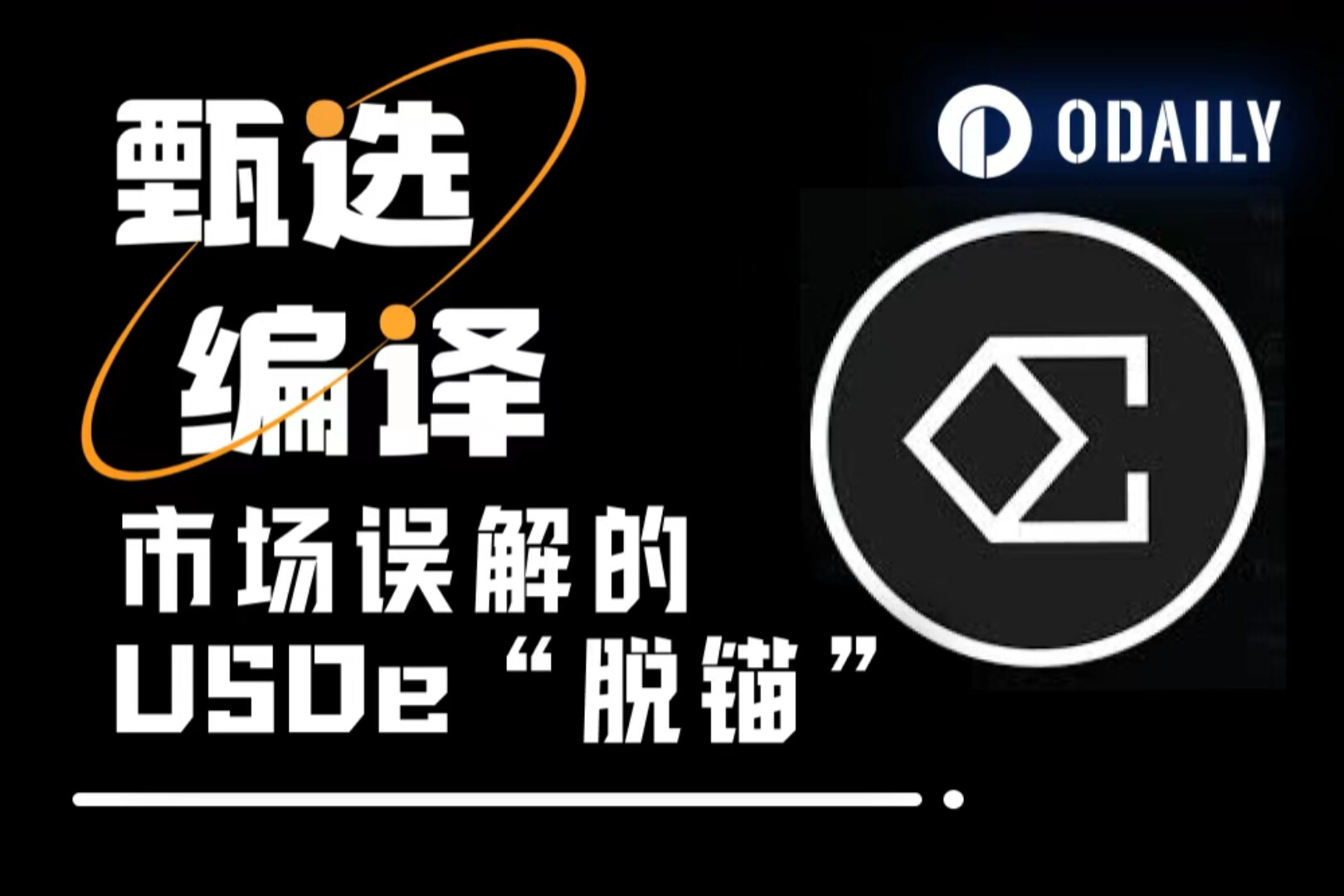Original author: A1 Research
Original translation: Saoirse, Foresight News
Decentralized finance (DeFi) has undergone significant structural evolution over market cycles. While centralized exchanges (CEXs) have consistently led in trading volume, decentralized exchanges (DEXs) have been gaining market share from CEXs in each cycle—and this time around, the competitive gap between the two has narrowed to unprecedented levels.
The core reason for this persistent market share disparity is clear: decentralization inherently imposes fundamental infrastructure limitations. For much of the past decade, blockchain, as a new type of financial infrastructure, has been unable to match the speed, liquidity, and user experience of CEXs.
However, with each cycle, DEXs are clearly making efforts to narrow this gap. By 2025, it is reasonable to ask the following question: Will decentralized exchanges (DEXs) eventually replace centralized exchanges (CEXs)?
A Cyclical Dilemma: Why Haven’t DEXs Catch Up?
Studies of multiple market cycles show that the infrastructure of DEX is gradually maturing, and each cycle has laid the foundation for the current landscape.
2017-2018: Experimental Exploration Period
Early DEXs, such as EtherDelta, ran directly on Ethereum's Layer 1, requiring settlements of several minutes, offering rudimentary user interfaces and severely limited liquidity. In stark contrast, Binance has scaled like a Web 2 application—fast, liquid, and user-friendly—quickly attracting both retail and institutional investors.
- DEX market share: approximately 0%
- CEX market share: approximately 100%
This early phase confirmed a key conclusion: decentralization is feasible, but performance and usability are the main obstacles that need to be overcome.
2020: DeFi’s Summer Breakout
Uniswap's automated market maker (AMM) model was revolutionary. It eliminated the need for an order book, allowing anyone to provide liquidity "permissionlessly"—a first substantial architectural innovation in decentralized exchange (DEX) design. However, at the time, AMMs primarily served "long-tail" tokens (niche tokens with low trading activity) and were unable to cover mainstream tokens with deep liquidity.
As the congestion of the Ethereum network intensified, gas fees soared from less than 20 gwei to more than 400 gwei, significantly increasing the cost of each transaction; at the same time, the trading interface was severely delayed, and professional traders still firmly chose CEXs such as Bybit and Binance.
- DEX market share: 0.33%
- CEX market share: 99.67%
To address liquidity issues, Uniswap V3 launched "pooled liquidity pools" in 2021—a complex solution that allows liquidity providers (LPs) to allocate liquidity within custom price ranges. While the issue of "impermanent loss" (IL) remains unresolved (resulting in many people being hesitant to provide liquidity for small tokens), this was a significant breakthrough: DEXs transitioned from "experimental protocols" to "viable trading venues for specific market segments and a select group of traders."
2022: The trust crisis after the FTX incident
In November 2022, the FTX exchange collapsed, shocking the entire industry: billions of dollars in user funds vanished overnight, and market trust in centralized custodians completely collapsed. In the weeks that followed, "Not your keys, not your coins" became a trending topic on Twitter (now known as X Platform) in the cryptocurrency world, prompting traders to turn to self-custody.
As a result, trading volume on decentralized exchanges (DEXs) like Uniswap and dYdX surged: Uniswap's trading volume exceeded $5 billion, and dYdX's trading volume soared 400%, leading to a significant migration of users from CEXs to DEXs. However, despite this positive momentum, core issues remain: poor wallet user experience, fragmented cross-chain liquidity, and a lack of fiat currency deposit and withdrawal channels. As the short-term panic subsided, user behavior gradually returned to normal, with many returning to CEXs.
- DEX market share: approximately 5%
- CEX market share: approximately 95%
In response to this, the DeFi ecosystem has further innovated: launching cross-chain Uniswap routing functions and optimizing user experience through wallets such as Rabby Wallet and Phantom.
However, DEXs still cannot achieve the low latency of CEXs. While incremental improvements are made with each cycle, the performance gap remains significant: blockchains cannot yet support professional-level trading, and the ultra-low latency "order book architecture" fundamentally conflicts with the design constraints of AMMs.
2025: A turning point
The market landscape in 2025 has undergone a fundamental shift—for the first time, infrastructure has matured enough to support true competition between DEXs and CEXs. High-performance blockchains, on-chain central limit order books (CLOBs), direct fiat currency integration, and CEX-like low latency have been fully integrated into on-chain protocols. Perpetual swap DEXs (Perp DEXs) like Hyperliquid, Paradex, and Lighter are offering on-chain trading experiences that approach CEX functionality.
Liquidity aggregation, faster block confirmation times, and a unified margin system allow traders to execute various strategies from spot to derivatives directly on the chain, without having to face the cumbersome obstacles of previous on-chain transactions.
- DEX market share: approximately 19% (peaking at 23% in Q2 2025)
- CEX market share: approximately 81%
Although "functional parity" has not yet been achieved, DEX is no longer an "alternative" but has become a "direct competitor" to CEX.
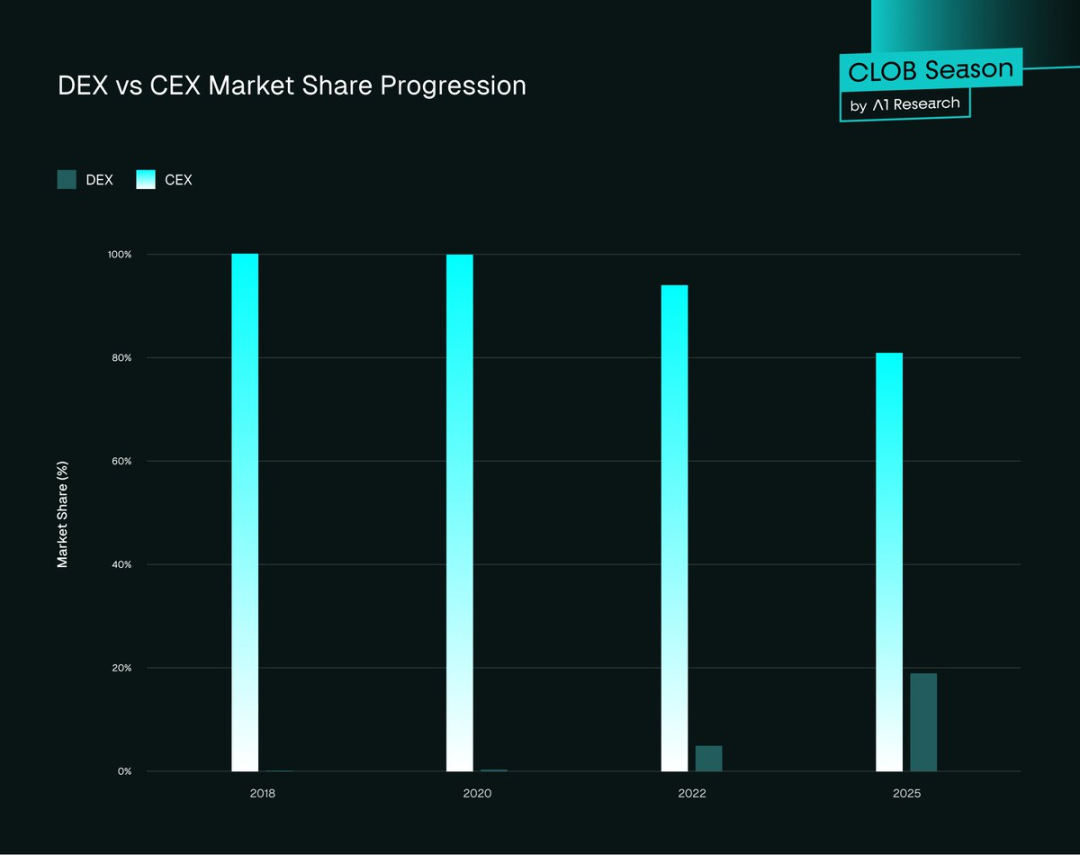
Figure 1. Trends in DEX and CEX market share
2025 Data Overview: CEX Still Dominates, DEX Catches Up Faster
The data clearly shows that while CEXs still dominate global liquidity, DEXs are narrowing the gap cycle after cycle and quarter after quarter. From spot to derivatives, all segments are showing signs of trading moving on-chain.
- Spot market: DEX’s market share rises from 10.5% in the fourth quarter of 2024 to 19% by the end of the third quarter of 2025.
- Futures market: At the end of the third quarter of 2025, DEX accounted for approximately 13%, a significant increase from 4.9% in the fourth quarter of 2024.
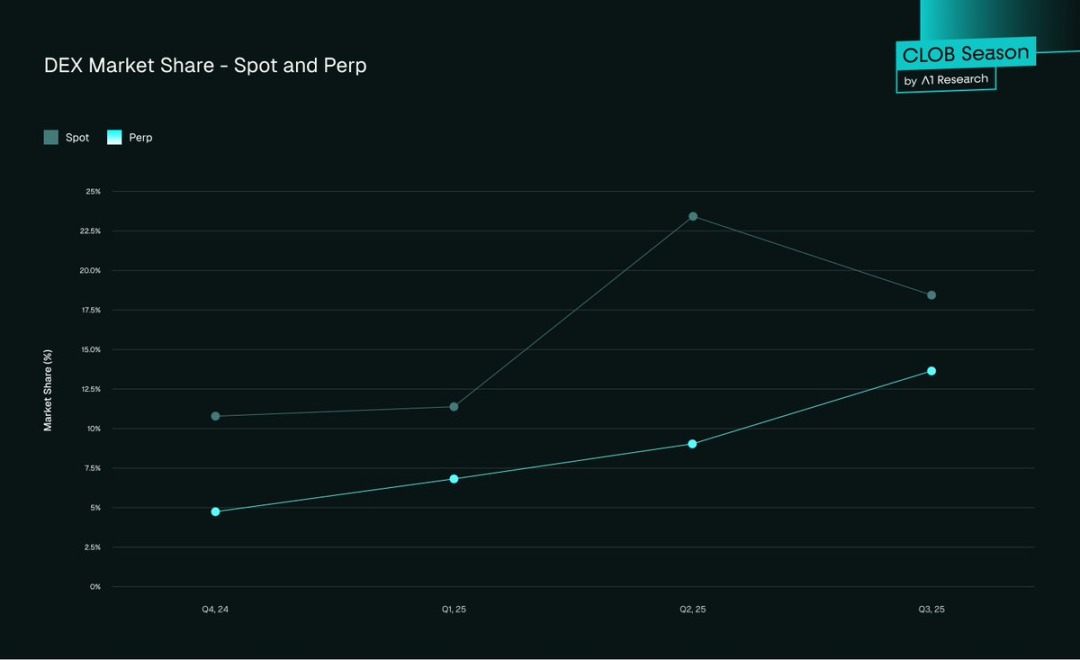
Figure 2. DEX Market Share – Spot and Perpetual Contracts
- Spot Trading Volume: In Q3 2025, DEX spot trading volume reached $1.43 trillion, a record high - a 43.6% increase from $1 trillion in Q2 2025, and exceeding the previous peak of $1.2 trillion in Q1 2025.
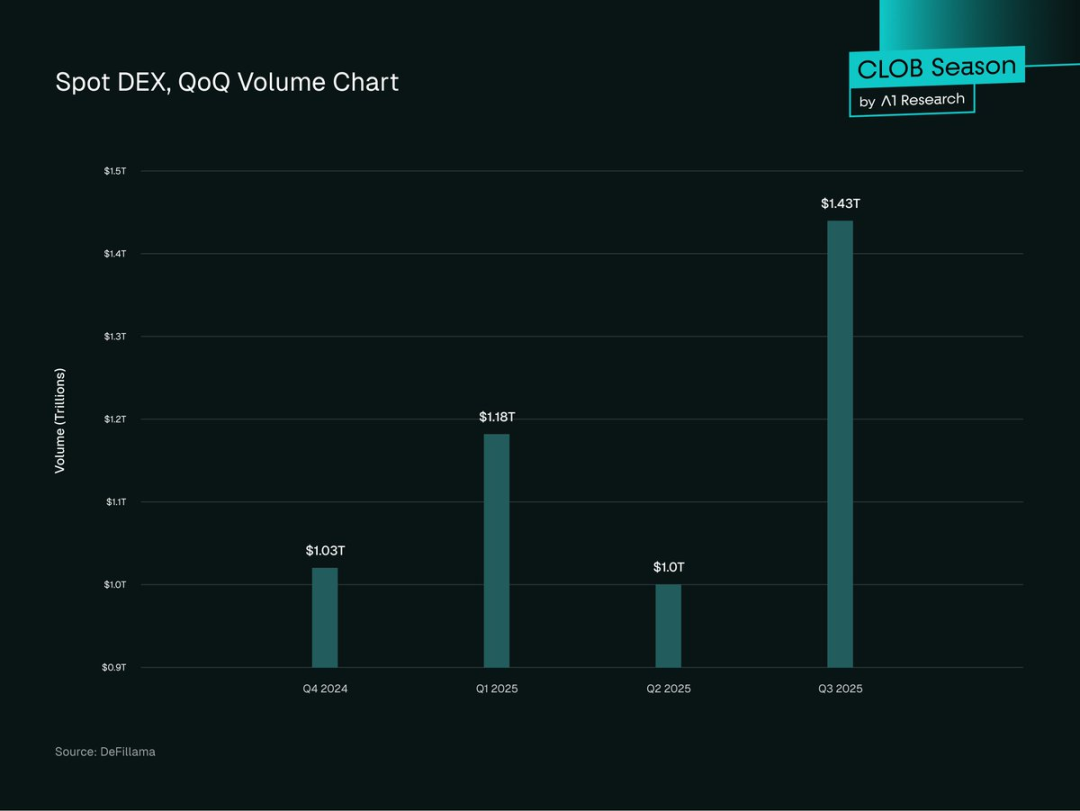
Figure 3. Spot DEX, quarterly trading volume chart
- Perpetual Contract Trading Volume: DEX perpetual contract trading volume expands significantly in 2025, reaching a cumulative $2.1 trillion on-chain by the third quarter—a 107% increase from the second quarter of 2025, and exceeding DEX’s own spot trading volume.
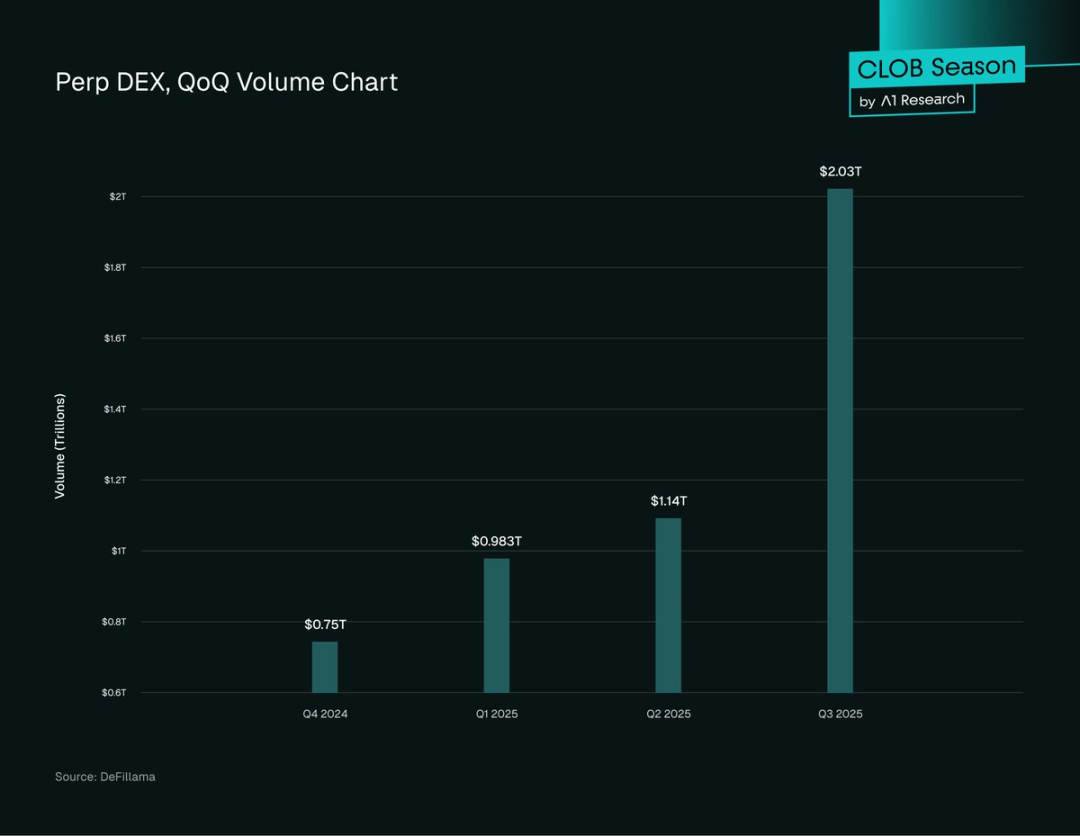
Figure 4. Perp DEX quarterly trading volume chart
- CEX Performance: In the third quarter of 2025, CEX spot trading volume is estimated to exceed US$5.4 trillion, maintaining its dominant position and increasing by 25% from the second quarter of 2025.
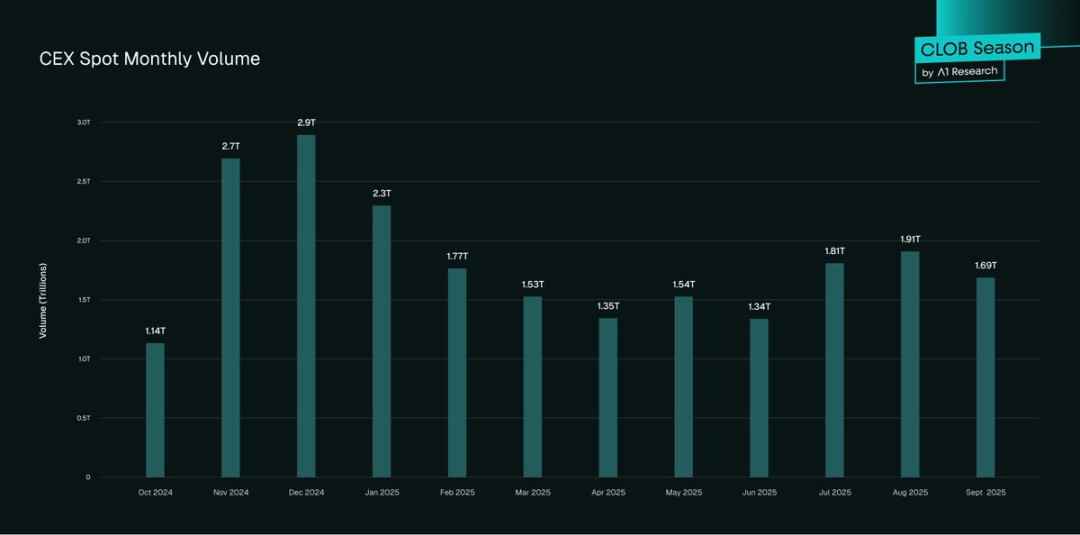
Figure 5. CEX spot monthly trading volume
- The trend is clear and accelerating: DEX spot trading volume increased by 43.6% month-over-month and 33% year-over-year; perpetual swap trading surged more than fivefold over the past 12 months, increasing its share of total futures trading volume from 3.45% to 16.7%. If the current trend continues, 2025 will mark an inflection point in the DEX market's positioning.
Adoption model
While DeFi adoption is steadily increasing, growth is uneven across regions and user groups. Diverse markets, user characteristics, and institutional behaviors are shaping DeFi's global evolution. The following patterns reveal DeFi's growth hotspots, the differences in participation between professional and retail users, and the implications of these trends for the next phase of growth.
- Global distribution is uneven: Asia-Pacific is the fastest-growing region, with on-chain activity increasing by 69% year-over-year, followed by Latin America and Sub-Saharan Africa. North America and Europe still dominate in terms of absolute transaction volume, but with lower growth rates (approximately 42%-49%). Asia and Africa are experiencing strong growth, particularly in small transactions on low-fee chains—a reflection of "organic retail-driven growth."
- Institutional Participation: Institutional DeFi adoption exhibits distinct patterns. Large trading firms are increasingly using "cross-platform routing"—combining liquidity from CEXs and DEXs—to optimize trade execution efficiency and hedge positions. This hybrid model suggests that professional traders are no longer viewing DEXs as "high-risk alternatives" but rather as "complementary trading venues."
- Token issuance preference: Most new projects choose to launch on a DEX first, leveraging DEXs for initial price discovery before seeking a CEX listing. This is due to the permissionless and fee-free nature of DEX token issuance. However, well-funded projects often opt for a CEX listing to achieve wider token distribution.
- DeFi Total Value Locked (TVL): In the third quarter of 2025, the total value locked in DeFi protocols reached $157 billion, a record high. Over 50% of this TVL is associated with DEX protocols and liquidity pools. Ethereum dominates the DeFi total value locked, accounting for approximately 63%.
- Scale of active traders: CEX still has an advantage in terms of user numbers, with over 300 million registered users worldwide (Binance alone has 290 million users); in comparison, DEX has approximately 10 million to 15 million monthly active users - although the number is small, these users are more "DeFi native" and have richer trading experience.
In summary, DEXs continue to narrow the competitive gap with CEXs. However, what truly allows DEXs to approach CEX performance levels is the evolution of their core trading architecture. The next breakthrough will be driven by the "On-Chain Order Book (CLOB) model"—a model that combines the advantages of decentralization with the efficiency of CEXs and traditional finance (TradFi).
Breaking the AMM Barrier: The Era of High-Performance CLOB DEX
Automated market makers (AMMs) drove the first wave of DeFi, enabling permissionless trading. However, they suffer from significant shortcomings in efficiency, price discovery, and capital utilization. The emergence of a new generation of on-chain central limit order book (CLOB) DEXs marks a structural leap forward in DEX architecture.
Taking Hyperliquid as an example, it demonstrates the possibility of "combining CEX-level performance with on-chain transparency": by reintroducing the order book mechanism into the decentralized system, it solves the core pain points of traders' dependence on CEX - latency, execution accuracy, and capital efficiency, especially the key issues in limit orders and derivatives trading.
- Latency: Average confirmation time [only 0.07 seconds] (achieved through the HyperBFT consensus mechanism) - comparable to mainstream CEXs and much faster than AMM DEXs (2-30 seconds).
- Liquidity Depth: On-chain CLOBs like Hyperliquid have set a new benchmark for decentralized liquidity—the platform can process up to 200,000 orders per second, with open interest reaching $6.5 billion, and its deep order book can handle large trades with minimal price impact. For major trading pairs like Bitcoin (BTC) and Ethereum (ETH), slippage (the deviation between the transaction price and the expected price) is less than 0.1%, comparable to CEXs. This stands in stark contrast to AMMs: even with architectural optimizations like the ve(3,3) mechanism, slippage and impermanent loss remain issues. However, less actively traded "niche trading pairs" on Hyperliquid still face wide spreads, demonstrating that liquidity depth varies across markets.
- Transaction Fees: Hyperliquid's CLOB design significantly reduces transaction costs—the average taker fee for futures trading is approximately 0.035%-0.045% and for spot trading is approximately 0.07%. Makers also receive a small commission. This fee level is comparable to top CEXs and significantly lower than the typical swap fees of AMMs (0.3%-0.5%). Unlike AMMs, traders do not incur the costs of impermanent loss or routing inefficiencies, making CLOBs more capital-efficient for active and institutional traders.
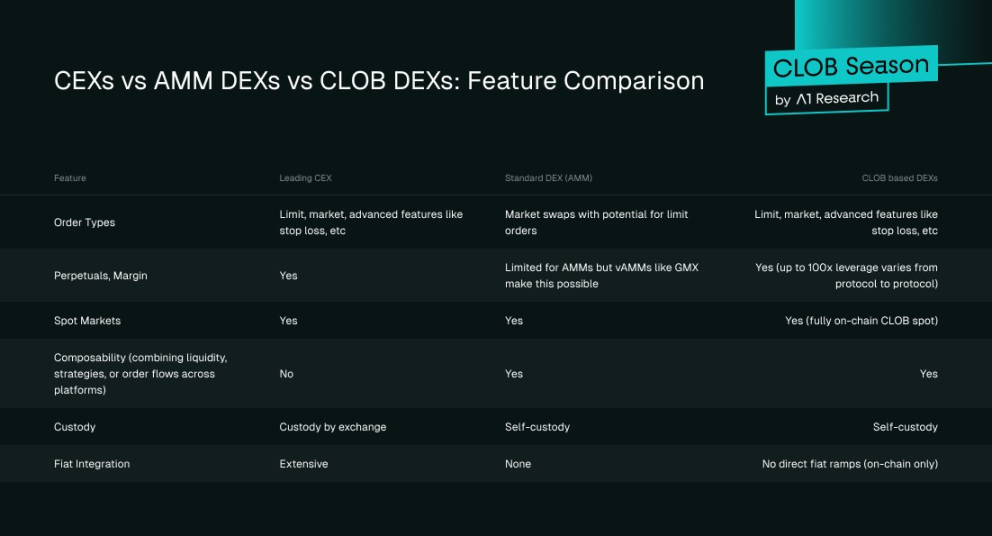
Figure 6. CEX vs. AMM DEX vs. Order Book DEX: Feature Comparison
CLOB-based DEX represents the "fusion direction" of CEX and DEX - it has both the high performance and deep liquidity of CEX and the self-custody, transparency and on-chain execution advantages of DEX.
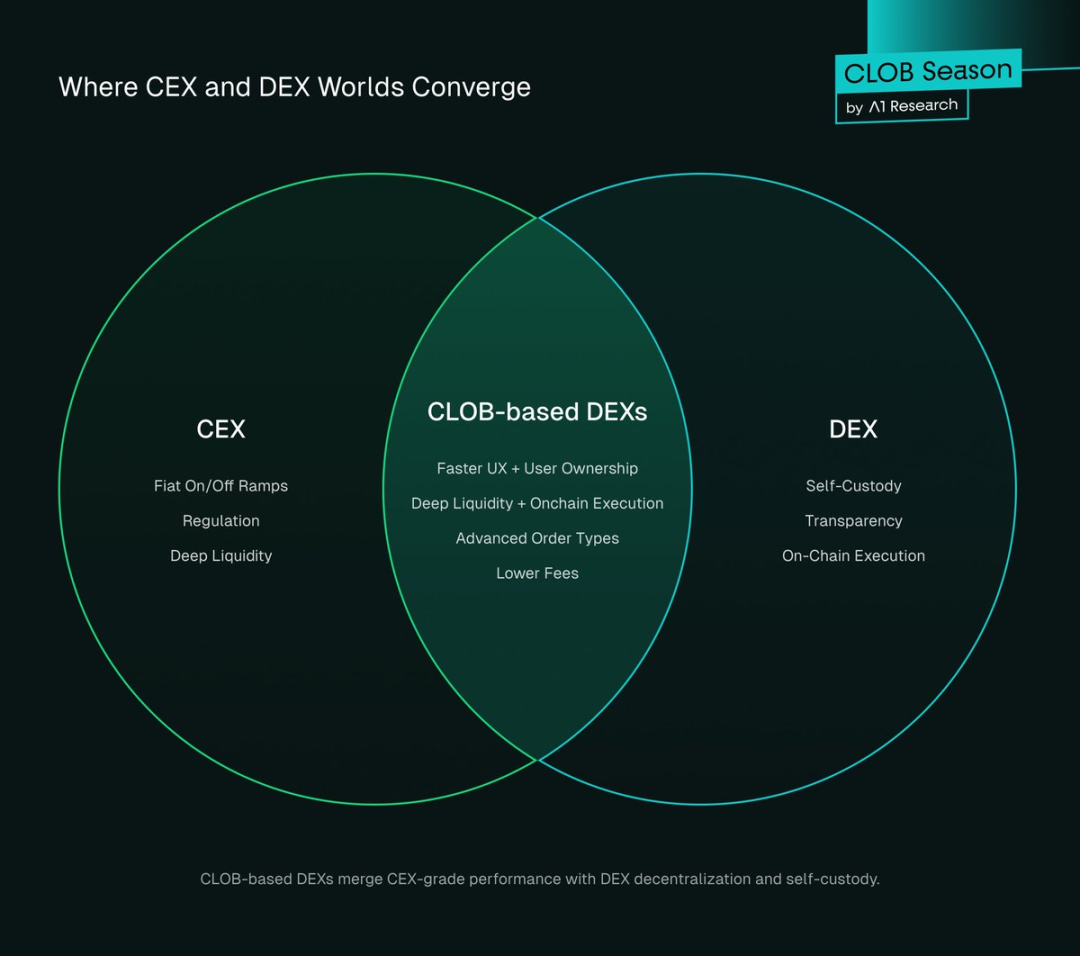
Figure 7. The intersection of CEX and DEX
Why are traders turning to DEXs?
Traders may choose decentralized platforms over custodial ones due to ideological alignment, but the real driver of migration is tangible improvements in DEX security, cost efficiency, or operational convenience. CEXs' past dominance stemmed from their smoother user experience and deeper liquidity.
Today, DEXs are gradually catching up—by 2025, DEXs will not only achieve near-functional parity with CEXs but also establish competitive advantages in specific areas. Current DEXes exhibit three structural advantages: decentralization with a CEX-level user experience, extremely low (or even zero) fees, security, and access to a "fair market."
1. Decentralization + CEX-level user experience
DEX inherently has two major advantages:
- Transparency: On-chain settlement makes transactions traceable, liquidity verifiable, and often provides “proof of reserves”, allowing users to independently audit protocol activity;
- Self-custody: Traders always have control over their assets, completely eliminating the risk of CEX hacking attacks - as of mid-2025 alone, the total amount of funds stolen from CEX hacking attacks has exceeded [US$2.17 billion].
However, DEXs have historically struggled with execution infrastructure: rudimentary user interfaces, highly fragmented liquidity (resulting in high slippage costs), slow settlement times, and high fees. Traders tolerated the risks of CEXs simply because they offered speed and ease of use. With the launch of dYdX, these infrastructure shortcomings began to improve, and the emergence of Hyperliquid has exponentially improved the DEX experience.
In 2025, CLOB DEX represented by Lighter, Paradex, and Bullet will emerge. These DEXs are comparable to CEX in speed and efficiency (even better in some scenarios), while retaining the core advantage of decentralization.
Modern DEX experience upgrades include:
- User Experience/Interface Innovation: Hyperliquid, Paradex, and Lighter’s trading dashboards are comparable to Binance in design and responsiveness.
- Liquidity transformation: AMMs are gradually replaced by on-chain CLOBs, enabling deep order books, narrow spreads, and low slippage;
- Seamless onboarding process: Wallet integration, one-click trading, fiat currency deposit channels and guided tutorials make the DEX account opening process sometimes faster than the CEX KYC process.
For example, Hyperliquid's trading volume in the second quarter of 2025 reached US$655.5 billion. The core reason why DEX can achieve such a huge trading volume is that it provides CEX-level user experience and ease of use without sacrificing asset custody and transparency.
2. Zero-fee model
The biggest difference between the DEX and CEX business models lies in their transaction fee structures. CEXs have long relied on taker/maker commissions, rebates, and affiliate marketing revenue for profitability, while DEXs are reshaping this economic framework.
Taking perpetual contracts as an example: Binance charges a 0.020% fee for maker orders and a 0.040% fee for taker orders. Meanwhile, emerging DEXs like Paradex and Lighter have completely eliminated trading fees. These platforms adopt the Robinhood model—instead of charging users direct transaction fees, they generate revenue through market makers paying for access to order flow and execution priority.
For example, Paradex pioneered structured models like Retail Price Improvement (RPI) and Payment for Order Flow (PFOF), which both improve users' trade execution quality and ensure sustainable revenue for the protocol. This model replicates the innovation Robin Hood brought to retail stock trading, but is entirely on-chain and more transparent.
The impact of zero-fee DEX is far-reaching:
- Disrupting the CEX Affiliate Economy: Zero transaction fees change the traditional CEX charging model. Although traders do not need to pay taker/maker fees, the protocol can still generate revenue through PFOF, RPI, advanced features, etc., reducing dependence on affiliate commissions and reshaping the reward mechanism of the trading ecosystem.
- Lowering the barrier to market participation: Professional/VIP traders on CEXs can receive commission rebates based on high trading volume, but most users pay standard fees and are highly sensitive to fee reductions or zero fees. Zero-fee DEXs precisely meet the needs of these users.
- Reconstructing the incentive mechanism: DEX provides incentives such as on-chain referral programs, governance rewards, token airdrops, and liquidity rewards. Although not as stable as CEX’s alliance share, it is more in line with users’ actual activities.
While transaction fees may seem small, they can have a significant impact on large-scale trading: for active users, even small differences in fees can accumulate into significant costs over time (especially in the perpetual contract market). The rise of zero-fee or ultra-low-fee DEXs may force CEXs to re-evaluate their pricing models—a strategy similar to the impact Robinhood had on stock brokerage fees. In the long run, fee compression will shift the focus of competition from pricing to liquidity depth, execution quality, and comprehensive financial services.
It is worth noting that mainstream CEXs are strategically deploying decentralized infrastructure, which may ultimately affect their market dominance: for example, Binance co-founder CZ provides consulting services to Aster, a DEX based on the BNB chain, and publicly stated that Binance is increasing its investment in "non-custodial business" and "on-chain business."
Other large CEXs, such as Bybit, have also begun taking action, either integrating on-chain trading functionality or directly investing in emerging DEX infrastructure. For these institutions, this move is both a risk hedge and a reflection of their understanding that the next phase of growth in the exchange industry will likely revolve around on-chain integration, interoperability, and community alignment.
3. Security, accessibility, and market fairness
DEX has the core characteristics of "trustlessness" and "risk resistance": users always control their assets, funds will not be seized, and protocol rules cannot be tampered with; audit records are permanently stored on the chain, even if the platform team disappears, the market can still operate normally, and users do not need to worry about "arbitrary rule changes" or "discriminatory treatment."
At the same time, DEX provides "permissionless global access": traders can operate 24 hours a day without completing KYC, applying for listing permits, or being restricted by geographical regions; any token can be launched instantly without paying fees and without centralized review; in addition, DEX can be seamlessly integrated with other DeFi protocols and smart contract applications to form a "highly composable ecosystem."
DEX's market mechanism is also transparent: open source code, verifiable liquidity, and on-chain order books significantly reduce the possibility of "selective market manipulation"; its architecture can reduce "operational errors during market fluctuations" and give traders confidence that DEX can operate reliably when market stability is most needed.
On October 9th and 10th, 2025 (according to the author's local time zone), the cryptocurrency market experienced its largest liquidation event in history: over $19 billion in leveraged positions were liquidated, impacting 1.6 million traders, driven by President Trump's announcement of a 100% tariff on Chinese imports. During this period, CEXes like Binance experienced system instability, while decentralized protocols like Aave protected $4.5 billion in assets through risk-resistant oracles. Hyperliquid maintained transparent operations and a stable launch throughout.
This incident highlighted the stark contrast between trust and stability: CEXs suffered a loss of credibility, while on-chain platforms maintained operational continuity. It also demonstrated the operational advantages of transparent settlement mechanisms during market shocks and accelerated the trend of trading migration to DEXs.
These characteristics further confirm the "structural advantages" of DEX, and also complement the "performance and cost advantages" brought about by modern CLOB and AMM improvements, jointly promoting the improvement of DEX competitiveness.
Outlook for the Future
CEX remains indispensable in areas such as "fiat currency deposit and withdrawal channels, compliance products, insurance services, and trusted entry for new users/institutions"; while DEX performs outstandingly in "decentralized core value scenarios" - such as on-chain transparency, user self-custody, innovative financial product issuance, and privacy protection functions.
Today, more and more traders (especially established traders and institutions) are operating across ecosystems: leveraging CEX liquidity to convert fiat into cryptocurrencies (deposits and withdrawals), while simultaneously relying on DEXs to execute trades, implement DeFi strategies, and achieve self-custody. This dual-platform model is rapidly evolving from the exception to the norm. However, if technological advancement and DEX adoption continue at their current pace, DEXs are poised to ultimately achieve market dominance.
Catalysts to watch
Technological advancements have significantly enhanced the capabilities of DEXs. Continued breakthroughs in areas such as liquidity depth, capital efficiency, seamless fiat currency integration, and regulatory clarity will further accelerate DEX adoption and narrow the gap with CEXs. Key catalysts include:
- On-chain CLOB expansion: Existing networks like Hyperliquid, or future "app chains," already offer "deep liquidity with sub-second latency." If they can achieve the same liquidity depth for "less actively traded niche trading pairs," the remaining "execution gap" will be significantly narrowed, attracting more sophisticated day traders to DEXs.
- Composability and new product categories: Perpetual contracts have become a "differentiated advantage area" for DEX; currently, "on-chain options trading" is still basically unfeasible - if a breakthrough is achieved in this area, it is expected to attract a large number of retail and institutional TVL (total locked value) to flow into DEX.
- Regulatory Clarity and Convergence: As CEXs like Binance face restrictions in multiple jurisdictions, regulators are beginning to explore frameworks for recognizing non-custodial platforms as legitimate market venues. Singapore and Japan have already begun testing or researching compliant DeFi sandboxes, and other countries are expected to follow. This regulatory clarity will drive the mainstream adoption of DEXs—allowing users and institutions to participate without regulatory uncertainty, thereby strengthening trust in the DeFi ecosystem.
- On-chain dark pools and privacy protection: On-chain dark pools provide DEXes with a confidential trading venue, enabling large trades to be executed without disclosing the public order book. This privacy prevents front-running and liquidation sniping, attracting institutional participants who seek efficient trading while avoiding malicious manipulation. By enhancing confidentiality and reducing the risk of manipulation, dark pools will accelerate institutional adoption of DEXes.
- Brand and fiat currency innovation: Emerging "decentralized financial technology" startups such as PayPal and Stripe may combine "bank-level support" with "seamless fiat currency channels" - this will further weaken CEX's advantage in the "fiat currency deposits and withdrawals" field.
Conclusion: The inevitable rise of DEX
The data shows a clear trend of expanding DEX market share: By Q4 2024, DEXs will account for 10.5% of spot trading and 4.9% of perpetual contracts. By Q3 2025, these proportions will soar to 19% and 13.3%, respectively. Depending on the segment, the average quarterly growth rate is approximately 25%-40%. Based on the current growth trajectory, we can derive the following forecasts:
- By mid-2027, the market share of DEX spot trading volume may exceed 50%;
- By early 2027, the market share of DEX perpetual contract trading volume may exceed 50%.
Even under the "conservative growth scenario", DEX will exceed the 50% market share threshold within two years, completely completing the transformation from a "niche alternative" to a "dominant platform."
Governments are increasingly involved in the development of DeFi frameworks. Singapore and Japan have already launched DeFi sandbox testing, and institutions like the SEC and MiCA are expected to launch similar frameworks. This will promote the legalization of non-custodial platforms, allowing more individuals and institutions to participate in DEXs without legal concerns.
Black swan events like the one on October 9th and 10th have proven that DEXs have a far greater structural advantage than CEXs in terms of transparent liquidation. When CEXs experience system failures, DEXs like Hyperliquid remain fully operational. This demonstrates that DEXs are not only superior in terms of ideology but also more reliable in terms of actual operations.
Looking ahead, on-chain dark pools and more composable liquidity layers are about to be implemented, which will further attract mature traders and institutions; CLOB-based DEXs are already approaching CEX-level execution efficiency. If privacy protection functions are integrated, they will form a "value proposition that CEX cannot match."
The competition trajectory clearly shows that 2025 is the "inflection point" in the development of DEX - it has transformed from an "experimental alternative" to a "trusted competitor" and is expected to occupy the majority of the market share in the next 2-3 years.
- 核心观点:DEX正加速缩小与CEX的竞争差距。
- 关键要素:
- 2025年DEX现货市场份额达19%。
- 链上CLOB实现CEX级低延迟交易。
- 零手续费模式颠覆传统定价。
- 市场影响:推动交易从中心化向链上迁移。
- 时效性标注:中期影响



